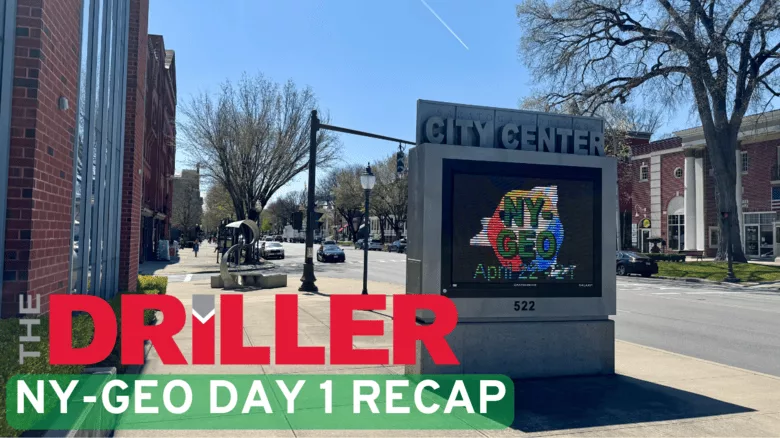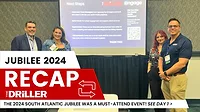NY-GEO 2025: Day 1 Recap, Impressions, and Highlights
The first official day of the conference kicked off in beautiful Saratoga Springs, New York today - here's a look at some of the highlights.

Image via John Oldani
Welcome to Saratoga Springs, New York — home of the 2025 NY-GEO Conference!
The day kicked off with a warm welcome from John Ciovacco, President of Aztech Geothermal and Co-Chair of the NY-GEO Conference. If you missed it, Ciovacco was recently featured on The Driller Newscast in a compelling conversation with Brock Yordy about the future of geothermal energy — and why NY-GEO 2025 may be the most ambitious edition yet. [Watch that discussion here.]
So far, the ambition is palpable.
Why? Scale, discussions, and solutions. One of the most refreshing aspects of this year’s panels has been the open and candid dialogue. Attendees are asking the tough questions — and panelists are answering them. The industry is radiating confidence, and it shows.
During the morning's "Establishing a Thermal Energy Network Program" panel, experts including Tim Ashmore (CDM Smith), Kristy Groncki (Baltimore Gas & Electric), Greg Koumoullos (Con Edison), and Bess Gorman (National Grid) shared insights on launching thermal networks, navigating regulatory hurdles, and managing real-world projects — a strong theme throughout day 1 of the conference.
Notable insights:
Greg Koumoullos shared updates on several geothermal projects underway in New York.
Kristy Groncki spoke about early-stage work in Maryland and the challenges of implementing the WARMTH Act.
Highlight question:
What are some of the most unexpected challenges in project development?
"We are designing projects without insurance that the projects will be approved for construction. That makes it challenging by getting commitment from the customer without fully knowing what the future holds in navigating the regulatory environment," Greg Koumoullos said.
Later in the morning, the "Thermal Energy Network Tools and Resources" panel brought more ground-level expertise. Speakers included Ania Camargo (Building Decarbonization Coalition), Angie Alberto Escobar (HEET), and Debbie New (VT Community Thermal Networks), who shared practical tools and a legislative guidebook for states financing geothermal pilot projects. [Check out the guidebook here.]
Highlight comment:
"You probably came to this room thinking that geothermal energy networks.are specific things that are produced by a specific type of company. None of that is true. Neighborhood scale decarbonization is basically an approach to transition buildings off of fossil fuels and do that in a way that creates benefits across businesses and residences in that area. How can we have win-wins in a specific targeted geographic targeted area to create the maximum amount of benefits. This looks like a lot more like economic development than traditional climate action. We have to implement those two efforts together." Jared Rodriques from Emergent Urban Concepts.
In the afternoon, a standout session explored horizontal piping design options for geothermal borefields explaining that there are different designs for different applications depending on a wide variety of factors.
- Kim Ojanne shared Sweden’s modular and angular approach to boreholes.
- Stuart Lyle discussed geothermal borehole vault systems.
- Jens Ponikau introduced unique granular compact designs.
The first day wrapped up with the beloved Top Jobs Awards, presented by NY-GEO Executive Director Christine Hoffer and John Thomas of WaterFurnace. Awards were given to three teams in charge of very unique geothermal projects in New York.
As Eric Torykian of Mission Geo noted after the NY-GEO annual dinner, geothermal is no longer a pipe dream. This year’s focus is all about ongoing projects and real-world system applications - and we are seeing it live here in Saratoga Springs. There’s been a noticeable shift from general cost concerns to in-depth technical discussions about design improvements and system optimization.
Capping off the evening was a powerful keynote by Radina Valova, Commissioner of the New York State Public Service Commission. She also highlighted real-world geothermal applications and left attendees with a resonant question:
“How will historians view the choices we make today? What legacy are we leaving for future generations?”
Looking for a reprint of this article?
From high-res PDFs to custom plaques, order your copy today!





